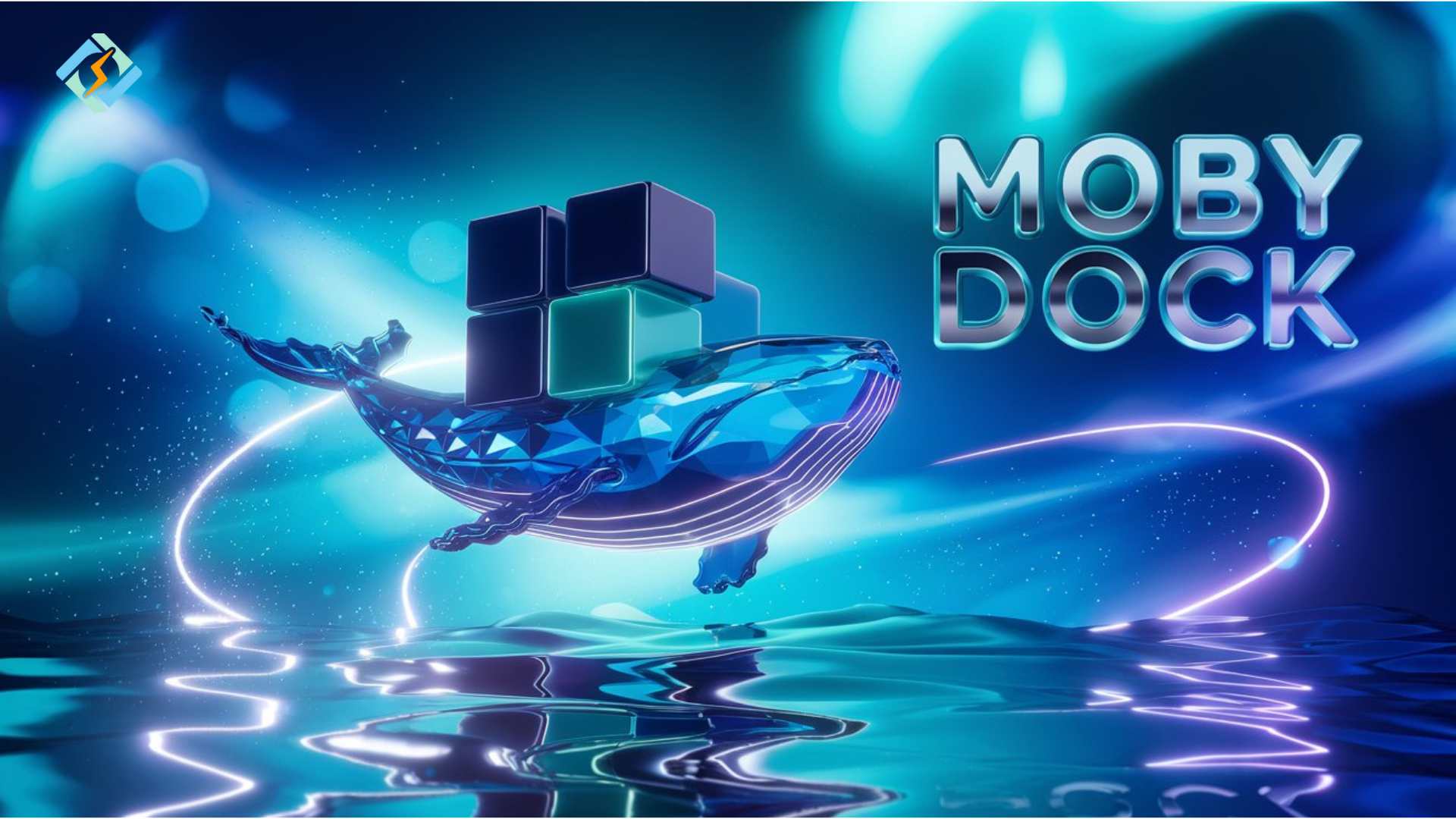Docker is one of the biggest revolutions in the world of software development by making containerization simple, portable, and efficient. However, few users know that the foundation of Docker’s technology lies in an open source framework Moby.
The Moby project was launched by Docker Inc in 2017 and serves as an open source core behind Docker’s products. It provides a modular framework that developers can use to assemble their own container systems, similar to how Docker itself was built. In essence, Moby is to Docker what the Linux kernel is to Linux distributions, a powerful, flexible base that enables innovation and customization.
In this article, we will break down what Moby Docker is, how it relates to Docker, and why we understand the difference between the two.
What Is the Moby Project?
The Moby Docker project is an open-source framework created by Docker Inc. It provides a modular foundation for building container-based systems. It is essentially a collection of container components, including tools like containerd, runc, and buildkit, which can be combined to create custom container platforms.
Moby allows developers, researchers, and vendors to experiment with new container technologies without being tied to Docker’s commercial product. It offers building blocks for container systems, networking, storage, orchestration, and runtime.
You can think of Moby as a “container system assembly kit”. You can mix and match components, much like assembling a Linux distribution. This flexibility gives organizations the right power to innovate beyond Docker’s pre-packaged solutions.
Get exclusive access to all things tech-savvy, and be the first to receive
the latest updates directly in your inbox.
The Relationship Between Moby and Docker
The relationship between Moby and Docker is quite similar to that between a core engine and a finished product. Docker uses Moby as the foundation for its tools, particularly Docker CE, the community edition. All the essential container runtime elements in Docker are sourced from the Moby Project.
When Docker open-sourced much of its internal codebase, it separated the open-source components (Moby) from its commercial offerings. This move allowed the community to collaborate more freely on the underlying technologies while Docker Inc. focused on user experience, enterprise tools, and developer productivity.
In simple terms:
- Moby = the open-source framework that powers Docker.
- Docker = the complete, user-ready product built on Moby’s components.
This separation ensures that innovation continues in the open-source community, while Docker users benefit from a polished, stable, and production-ready container platform.
Moby vs Docker: Core Differences
| Aspect | Moby | Docker |
| Purpose | An open-source framework for building custom container systems. | A complete container platform for developing, shipping, and running applications. |
| Audience | Developers, researchers, and system builders are experimenting with container technologies. | End users, DevOps teams, and organizations using containers in production. |
| Nature | Framework — provides modular components like containerd, runc, and buildkit. | Product — built on Moby components with added tools, UI, and enterprise features. |
| Customization | Highly customizable — users can mix, match, or replace components. | Limited customization — provides a pre-defined, user-friendly setup. |
| Governance | Community-driven and fully open-source under Docker Inc.’s guidance. | Developed and maintained by Docker Inc. as a commercial product. |
| Use Cases | Ideal for experimentation, research, or creating custom container infrastructure. | Best for production environments and developers needing a stable, ready-to-use tool. |
| Analogy | Like the Linux kernel — forms the core that others build on. | Like Ubuntu — a polished distribution built on that core. |
Moby Components and Architecture
The Moby Project is built on a standalone modular architecture that offers all the core components required to create a container system. It acts like a framework of interchangeable building blocks, each serving a specific function in the container lifecycle.
Here are all the key components that make up the Moby ecosystem:
| Component | Description |
| containerd | A core container runtime responsible for managing the container lifecycle — from image transfer and storage to execution and supervision. |
| runc | The lightweight, low-level runtime that actually runs containers according to the Open Container Initiative (OCI) specifications. |
| BuildKit | A powerful build subsystem that improves Docker image building efficiency, caching, and parallelism. |
| Libnetwork | Provides networking capabilities for container connectivity, including overlay and bridge networks. |
| Notary | Implements content trust in container images, ensuring that images are signed and verified for integrity. |
| HyperKit / LinuxKit | Tools for building lightweight virtual machines and minimal Linux distributions optimized for containers. |
| SwarmKit | Enables native clustering and orchestration capabilities, allowing containers to be deployed across multiple hosts. |
These components come together through a layered architecture, where each layer handles a specific part of the container lifestyle, from image creation to runtime execution and networking.
This modular design allows developers to replace or extend components as needed, making Moby Docker a highly adaptable tool for different environments.
Advantages of the Moby Project
The Moby Project has several benefits that make it an important foundation for container technology and open source innovation:
- Modularity and Flexibility
Moby Docker’s architecture allows developers to pick and choose components based on their needs. This modularity encourages experimentation and supports customized container platforms.

- Open-source Collaboration
Since it is an open source project, Moby welcomes contributions from the global developer community. This accelerates innovation, improves transparency, and ensures long-term sustainability.
- Reusability and Standardization
By adhering to OCI (Open Container Initiative) standards, Moby ensures compatibility with other systems and reusability across various container tools and platforms.
- Rapid Innovation
Developers can prototype, test, and iterate on new ideas quickly without having to wait for Docker’s commercial release. Moby, in a nutshell, acts like a sandbox for future container technologies.
- Foundation for Docker CE and Beyond
Since Docker CE is built on top of Moby, improvements in Moby directly enhance Docker’s reliability and performance. This ensures a stable yet evolving container ecosystem.
- Lightweight and Portable
Moby components are designed to be minimal and portable, making it pretty easy to build container systems optimised for specific hardware or operating systems.
Common Misconceptions: Moby ≠ Docker
Since Docker and Moby share the same origins, many users assume they are identical, but they are not. While they both are deeply connected, they serve different roles within the container ecosystem.
- “Moby is the same as Docker.”
Moby is an open source framework, while Docker is a commercial product built from that
Framework. Moby provides the core technologies (like containerd and runc), but Docker combines them into a user-friendly toolset.
- “Moby replaced Docker.”
Moby cannot replace Docker; it powers it instead. When Docker Inc launched Moby, the goal was to separate open source development from product packaging, not to discontinue Docker itself.
- “Moby is a new container engine.”
Moby is not a standalone container engine or runtime. Instead, it is a collection of modular components that can be assembled to create engines or platforms, including Docker.
- “Only developers need to care about Moby.”
While Moby is definitely more relevant to system builders and infrastructure engineers, understanding its role helps Docker users grasp how the technology works under the hood for troubleshooting, optimization, or customization.
Moby in the Docker Ecosystem: The Future Ahead
The Moby Docker Project will continue to play an essential role in Docker’s open-source journey. It offers the foundation upon which Docker CE and other container platforms are based on. As the ecosystem evolves, Moby provides the flexibility and openness required to adapt quickly to new technologies.
Future trends suggest that:
- Moby’s modular components like containerd and buildkit will continue to evolve independently, making Docker ecosystem more stable and extensible.
- Collaboration between open source communities will strengthen interoperability across different container tools like Podman, Kubernetes, and containerd.
- Innovation through Moby will help Docker focus on user experience, while developers leverage Moby to push the limits of container technology.
In essence, Moby acts like an innovation layer, driving low-level improvements, while Docker delivers these advancements to end users through a polished, production-ready experience.
Conclusion
The Moby Project represents the heart of Docker’s open source foundation. It is not a replacement or competitor to Docker, it’s the engine that powers it. By separating Moby from Docker’s commercial offerings, Docker Inc. enabled a thriving open-source community to innovate freely while maintaining a stable environment.
FAQs
Why did Docker create Moby?
Docker Inc. launched the Moby Project in 2017 to separate open-source development from its commercial offerings. This allowed greater community collaboration while keeping Docker’s end-user products stable and production-ready.
What components are part of the Moby Project?
Moby includes key container technologies such as containerd, runc, buildkit, swarmkit, and libnetwork. These components handle everything from container runtime to orchestration and networking.
Should developers use Moby or Docker?
Use Moby if you want to build or customize container systems. Use Docker if you need a stable, user-friendly container environment for application development and deployment.



